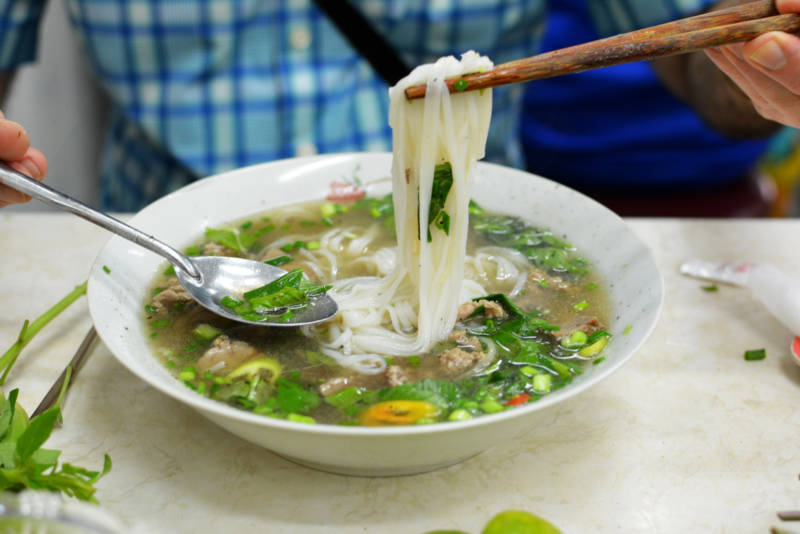I fell for pho in Saigon in 1974, when I was 5 years old. When my family came to America in 1975, my mom satisfied our family's cravings for the aromatic beef noodle soup with homemade batches, served on Sundays after Morning Mass. As Vietnamese expatriates, we savored pho as a very special food, a gateway to our cultural roots. When we didn't have pho at home, we went out for it in Orange County, California's Little Saigon, patronizing mom-and-pop shops that welcomed us with the perfume of pho broth.
Nowadays, there are many more pho options beyond the Vietnamese communities and I love to check them out whenever possible. From the cooks in the kitchen to the servers and customers in the dining room, more non-Vietnamese people are getting into the pho scene. As a cookbook author and cooking teacher, I also know first-hand that a multicultural mix of home cooks across America is interested in making pho.
The soup's crossover from Asian enclaves into the mainstream is surely what inspired the editors of Bon Appétit to launch last week's ill-fated instructional video for eating pho. By now, you may have heard of the debacle: The magazine invited a non-Asian chef to explain the differences between ramen, another popular Asian noodle soup, and pho and to share his best-practices for how to eat the noodle soup. They pitched the video as a public service announcement: "PSA: This is How You Should be Eating Pho." Encouraging the food-obsessed to follow their lead, they declared that "Pho Is the New Ramen." The video went viral — but for all the wrong reasons. The backlash — accusations of cultural appropriation and imperialism — caused a virtual boil over. Bon Appétit quickly removed the video and issued an apology. (You can still see the video here.)
Much of the anger centered around the choice of a white person to authoritatively speak about an Asian food. As the chef shared his personal insights, he never mentioned his fondness for the soup, his personal connections to it. That omission was an editorial mistake. Treating pho as merely a fashionable food negated its rich role in Vietnamese, Vietnamese-American, and now, American culture.
Pho has always been unpretentious and democratic, inviting everyone to experience and appreciate it. However, pho also represents the history of Vietnam and its push for self-determination. Born during the French colonial period, this dish persisted through political upheaval and economic hardship, then resettled and flourished with Vietnamese immigrants all over the globe.
